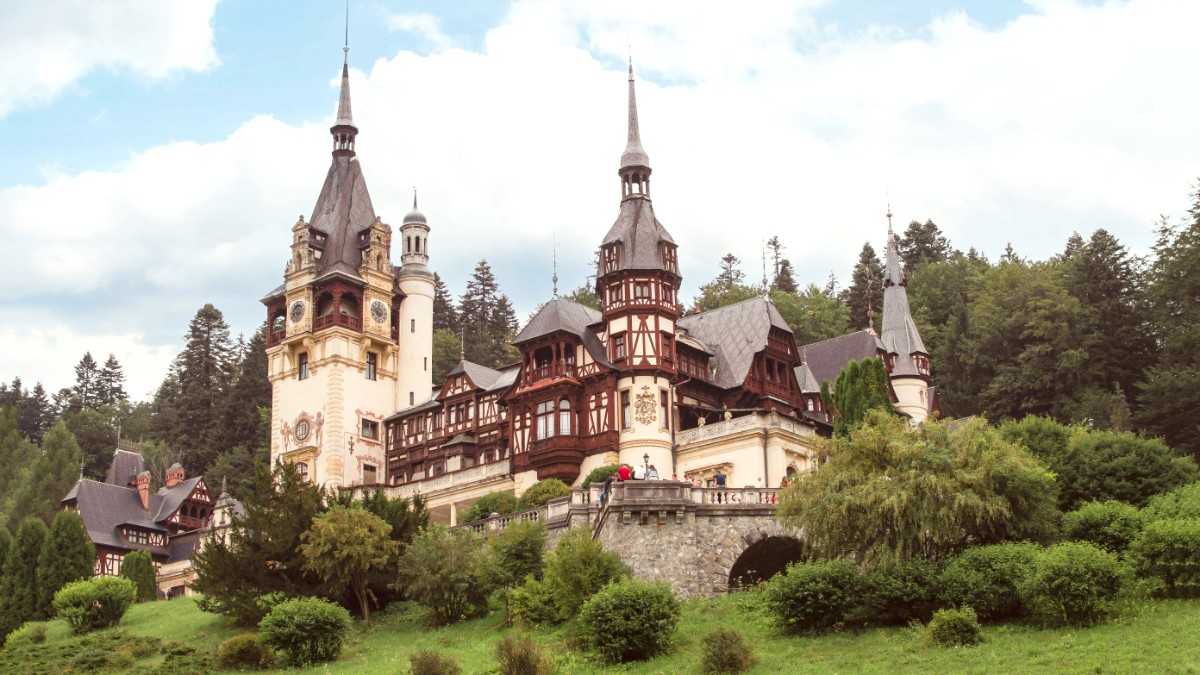
Transylvania, Romania
Peleș Castle is a remarkable Neo-Renaissance castle. King Carol I of Romania built it between 1873 and 1914 as his summer residence. Many consider it one of Europe's most beautiful castles due to its impressive architecture, intricate woodwork, stunning stained glass, and extensive collection of art and weaponry. Its blend of German Neo-Renaissance and Romanian traditional architecture makes it an unique sight.
Visitor Information:
Situated near Peleș Castle, Pelișor is a smaller, charming Art Nouveau-style castle. It was built for King Ferdinand I and Queen Marie. The castle is noteworthy for its unique interior design, notably Queen Marie's Golden Room, which features extensive gold decorations and intricate details. It allows a more intimate glimpse into royal life.
Visitor Information:
Beyond the castles, Sinaia has other cultural points of interest for visitors seeking insights.
Located within the monastery complex, this museum houses a collection of religious artifacts, ancient icons, and rare religious books. It offers insight into Orthodox monastic life and art.
Mainly a functional event venue and convention center, its Belle Époque design (built 1912) makes it a significant architectural landmark. It sometimes hosts art exhibitions or allows access to public areas for viewing grand interiors.
Sinaia’s history is woven into its very fabric, with several sites allowing a glimpse into its past as a royal retreat and a town of significance.
Sinaia Train Station: This historic building (late 19th century) reflects the era of royal travel. It has a special royal waiting room, sometimes accessible, for a glimpse into past royal journeys.
Located in the town center, this park is named after a former prime minister. It has a relaxing atmosphere and has witnessed much of Sinaia’s historical development. The park often has local events and offers a central green space.
Peleș and Pelișor Castles: These two castles are architectural marvels and profoundly important historical sites. They served as summer residences for Romania’s royal family, making them central to the nation's 19th and early 20th-century history. Their presence underscores Sinaia’s role as a royal and aristocratic hub.
Sinaia is a direct gateway to the stunning natural beauty of the Bucegi Mountains, with dramatic landscapes and unique geological features.
Sinaia is a main entry point to this extensive natural park. The park has diverse ecosystems, from dense forests to alpine plateaus. Scenic viewpoints, accessible via cable car, offer panoramic vistas of the Prahova Valley (Cota 1400, Cota 2000, Jepii Mari).
Babele (The Old Women) and Sfinxul (The Sphinx): Iconic wind-eroded rock formations on the Bucegi Plateau. Reach them by cable car from Bușteni or via challenging hikes from Sinaia. Ialomiței Cave: Impressive cave system deep in the mountains, with a monastery at its entrance.
Wildlife: The park has brown bears, chamois, deer, and many bird species. Observe from a distance. Geological features: Dramatic limestone formations, U-shaped glacial valleys, and various karstic phenomena.
These areas are popular for ski slopes in winter and hiking in warmer months.
Find outdoor activities on GetYourGuideAccessible by chairlifts, they offer beautiful mountain vistas and are excellent starting points for various outdoor activities.
Explore tours on GetYourGuideBeyond the well-known landmarks, Sinaia has several lesser-known spots that provide unique experiences and often fewer crowds.
For an unique view of Peleș Castle, seek out viewpoints from the surrounding forest trails. These allow different perspectives than the main entrance, allowing for distinct photography.